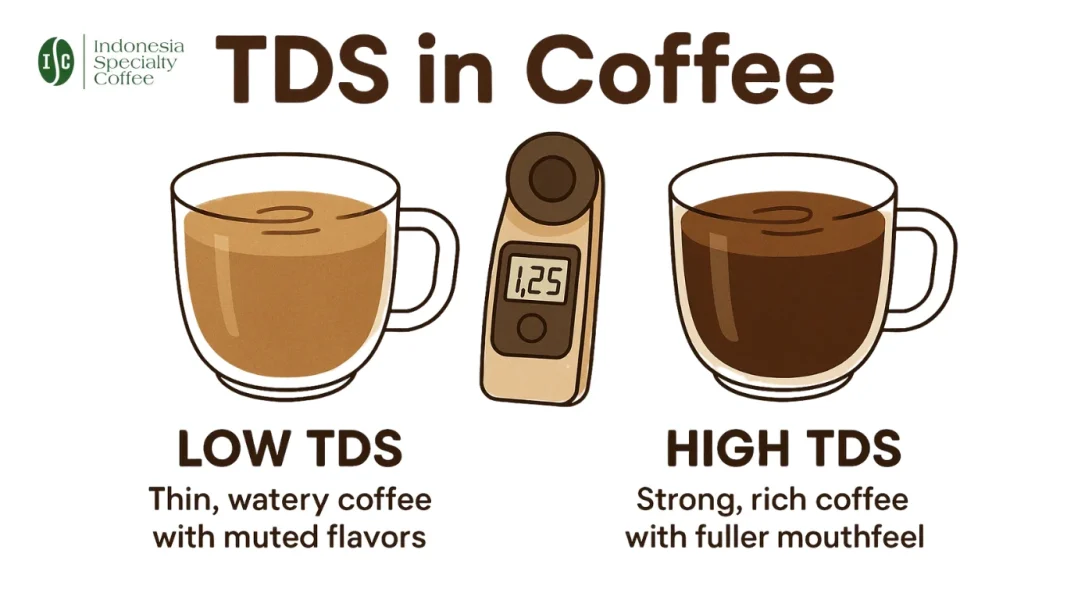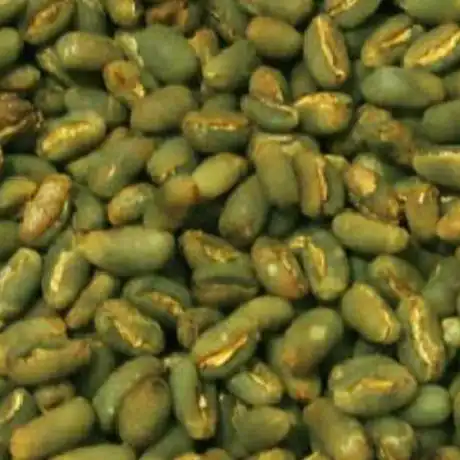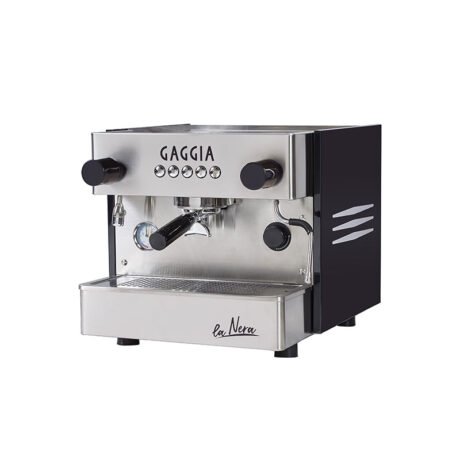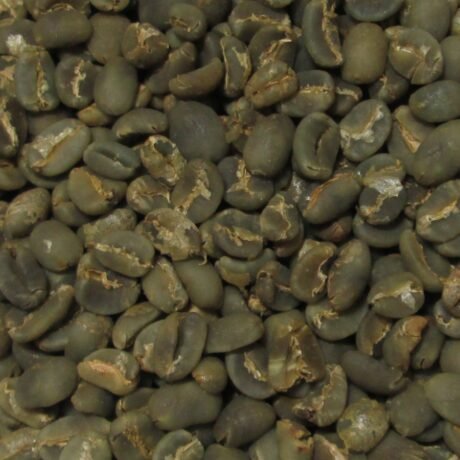TDS in coffee—three letters that can make or break your brew. You’ve nailed your grind, perfected your pour, and brewed with the finest Aceh Gayo beans… yet the flavor feels slightly off. Not wrong. Just… inconsistent.
Here’s the thing: you’re not overthinking it. You’re meeting an invisible barrier that every specialty coffee professional must eventually face—Total Dissolved Solids, or TDS.
In Indonesia’s booming specialty coffee scene, understanding TDS in coffee is no longer optional. It’s essential. It bridges science and soul, bringing repeatable quality to an industry rooted in craft. Whether you’re a barista, Q grader, or roaster, this guide will help you master TDS and brew with purpose.
What Is TDS in Coffee?
TDS in coffee stands for Total Dissolved Solids—a metric that tells you how much actual coffee matter is in your cup. Measured as a percentage, TDS defines the strength and concentration of a brew.
📊 Example: A 1.35% TDS reading means 1.35g of dissolved coffee solids are present in every 100g of brewed liquid.
In simpler terms, TDS helps you understand whether your coffee tastes bold and rich or light and tea-like—and whether that was intentional or accidental.
- High TDS = dense, syrupy mouthfeel (think espresso or a full-bodied V60).
- Low TDS = bright, delicate texture (ideal for light roasts and filter brews).
Explore more about brewing ratios and timing to complement your TDS mastery.
Why TDS in Coffee Matters for Flavor and Consistency
In a world driven by taste and feel, TDS in coffee adds a critical layer of objectivity. Here’s how it transforms brewing from guesswork to greatness:
✅ 1. Standardized Brewing Recipes
TDS readings let you replicate flavor profiles across time and baristas—critical when scaling from 10 cups to 1,000 cups daily.
✅ 2. Quality Control Across Cafés
Multi-location cafés can use TDS to maintain flavor integrity across branches—no more taste variation due to brewing inconsistencies.
✅ 3. Competitive Advantage in Global Markets
In coffee competitions and specialty certifications, TDS and Extraction Yield (EY) are essential metrics. Mastering TDS helps Indonesian brewers align with international grading standards.
How to Measure TDS in Coffee
The industry-standard tool? A digital refractometer—like those made by VST or Atago.
Quick Steps:
- Brew your coffee.
- Let it cool to around 22–25°C.
- Use a pipette to drop a sample on the refractometer.
- Get the reading.
With your TDS in coffee measured, combine it with brew ratio to calculate Extraction Yield—a metric that unveils how efficiently you’ve extracted flavors.
Ideal TDS in Coffee by Brewing Method
| Brewing Method | Ideal TDS (%) |
|---|---|
| Espresso | 8.0 – 12.0 |
| Pour Over (V60) | 1.15 – 1.45 |
| French Press | 1.30 – 1.60 |
| Cold Brew | 1.20 – 1.50 |
Explore our guide to TDS in coffee brewing for advanced calibration strategies.
TDS and Indonesian Coffee: Global Flavor Meets Global Standards
Indonesia is home to coffee legends: Toraja, Gayo, Mandheling, Lintong. But flavor isn’t enough. Consistency is what puts Indonesian coffee on the global map.
With tools like refractometers and consistent TDS benchmarks, Indonesian producers and brewers can:
- Reproduce flavor reliably
- Align with international coffee protocols
- Elevate the perception of origin-based quality
Want to taste the difference TDS makes? Try our curated coffee sampler packs—designed to highlight regional flavors.
How to Use TDS to Improve Your Coffee Program
Here’s how professionals are turning TDS in coffee into a powerful quality control system:
🔧 Practical Steps:
- Invest in a digital refractometer
- Train your baristas to take daily TDS readings
- Record data and match it with flavor notes
- Compare results across water types, roast levels, and grind sizes
- Benchmark against global competition standards
Ready to pair precision with heritage? Dive deeper into Toraja coffee and brew it with TDS in mind.
Why TDS in Coffee Is a Must-Know for Indonesian Coffee Professionals
TDS is more than a technical stat—it’s a gateway to quality, balance, and consistency. For Indonesia’s fast-growing coffee ecosystem, it’s a step toward global recognition.
With a refractometer and a few practice runs, you’ll soon unlock flavor clarity that transforms your coffee game.
👉 Curious how TDS in coffee intersects with bean chemistry? Read more on the chemical composition of coffee beans.
Final Sip: TDS in Coffee = Science + Soul
When you measure TDS in coffee, you honor the journey—from farmer to roaster to cup. You ensure the Gayo terroir sings clearly, that your espresso barista in Jakarta matches the one in Tokyo, and that every cup reflects excellence.
So, next time you brew, don’t just trust your gut.
Ask yourself:
“Am I brewing with precision—or just hope?”
With TDS in coffee, you’re not just brewing. You’re crafting intentional, repeatable excellence.





